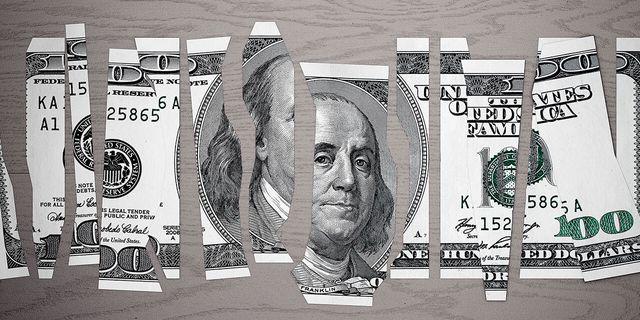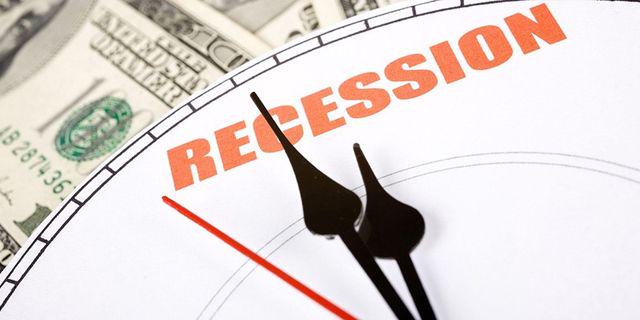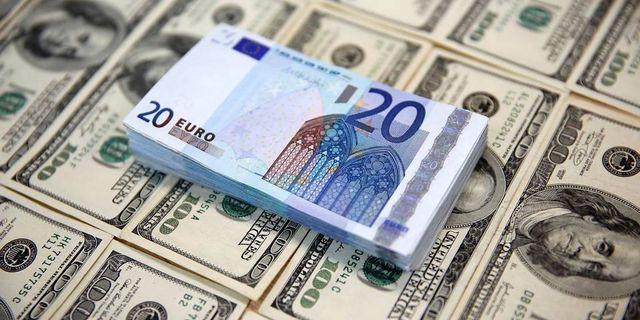
Bill Williams ist der Schöpfer einiger der bekanntesten Marktindikatoren: Awesome Oscillator, Fraktale, Alligator und Gator.
For a seamless experience, click “Redirect me.”

Verschwenden Sie nicht Ihre Zeit - beobachten Sie, wie die NFP den US-Dollar beeinflusst!
Hinweis zur Datenerfassung
Wir speichern Ihre Daten für den Betrieb dieser Website. Durch Drücken der Taste stimmen Sie unserer Datenschutzpolitik zu.

Forex-Buch für Anfänger
Ihr Leitfaden durch die Welt des Handels.
Überprüfen Sie Ihre Inbox!
In unserer E-Mail finden Sie das Buch Forex 101. Tippen Sie einfach auf die Schaltfläche, um es zu erhalten!
Risikowarnung: ᏟᖴᎠs sind komplexe Instrumente und bringen ein hohes Risiko mit sich, aufgrund von Hebelwirkung schnell Geld zu verlieren.
71,43 % der Privatanleger-Konten verlieren Geld, wenn sie mit diesem Anbieter ᏟᖴᎠs handeln.
Sie sollten sich überlegen, ob Sie verstehen, wie ᏟᖴᎠs funktionieren und ob Sie es sich leisten können, zu riskieren, Ihr Geld zu verlieren.
Informationen sind keine Investitionsberatung
Jeder, der den Devisen- und Aktienhandel ausprobieren möchte, will Geld verdienen. Wenn eine Person ein Handelskonto eröffnet und eine Einzahlung vornimmt, ist das Bild immer positiv: Das Konto weist in kürzester Zeit beeindruckende Gewinne auf, so dass es möglich ist, einen neuen Computer, ein Auto oder sogar ein Haus zu kaufen. Schon der Gedanke an diese Vorteile macht uns glücklich und erwartungsvoll. Wir erwarten das, was kommen wird. Wäre es nicht wundervoll, wenn der Handel nur Profit bedeuten würde und sonst nichts? Sicherlich wäre das Leben einfach, wenn Händler immer Geld verdienen würden. Aber Sie haben wahrscheinlich schon gehört, dass man beim Handel Geld verlieren kann. Wahrscheinlich haben Sie selbst schon Verluste gemacht.
Gibt es eine Möglichkeit, Handelsverluste zu vermeiden? Dieser Artikel versucht, dem Problem auf den Grund zu gehen und herauszufinden, warum Händler Geld verlieren. Nehmen Sie sich ein paar Minuten Zeit, um zu lernen, wie man auf den Finanzmärkten nicht scheitert.
In der Regel dauert es nur ein paar Minuten, um auf "Kaufen" oder "Verkaufen" zu klicken und eine Handelsposition zu eröffnen. Doch auch wenn der Handel einfach erscheint, ist er es nicht. Wenn sich der Markt nicht zu Ihren Gunsten entwickelt, haben Sie ein Verlustgeschäft. Um Geld zu verdienen, setzen Sie Ihr eigenes Geld aufs Spiel.
Es ist wichtig zu verstehen, dass ein Verlust bei einem Geschäft nicht das größte Problem darstellt. Wenn Sie auf Ihr Handelsvolumen achten und nicht Ihr gesamtes Guthaben für eine einzige Transaktion ausgeben, haben Sie auch nach einem schlechten Geschäft noch viel Geld auf Ihrem Konto. Infolgedessen haben Sie mehr Möglichkeiten, bessere Geschäfte zu eröffnen. Wenn Sie jedoch ungeduldig sind und Ihr Geld schnell vermehren wollen, kann ein einziger Verlusthandel Ihre Einzahlung zunichte machen. Sie werden dann wahrscheinlich sehr enttäuscht sein und aufgeben.
Welche Schlussfolgerung können wir daraus ziehen? Es sind zwei. Erstens: Der Handel ist riskant und kann zu Verlusten führen. Zweitens: Es gibt eine Möglichkeit, Verluste zu minimieren und den potenziellen Gewinn zu maximieren.
Es ist schwierig, eine Schätzung darüber abzugeben, wie viele Händler Geld verlieren. Die Daten der verschiedenen Institutionen sind unterschiedlich. Laut der US-Börsenaufsichtsbehörde Securities and Exchange Commission verlieren beispielsweise durchschnittlich 70 % der Devisenhändler jedes Quartal Geld. Etoro sagt, dass 80 % der Daytrader über ein Jahr hinweg Geld verlieren.
Wer leidet am meisten? Einerseits sind Anfänger gefährdet, die dem Studium nicht viel Aufmerksamkeit schenken und so schnell wie möglich ihr erstes Geschäft eröffnen wollen. Andererseits können Personen, die mit dem Handel begonnen und einige Fortschritte gemacht haben, sich zu sicher fühlen und das Risikomanagement vernachlässigen. Sie könnten irgendwann beschließen, bei einem Geschäft zu viel zu riskieren. Infolgedessen werden ihre bisherigen Fortschritte zunichte gemacht.
Sehen wir uns die Hauptgründe an, warum Händler Geld verlieren.
Wenn Sie ein erfolgreicher Händler werden wollen, müssen Sie akzeptieren, dass einige Verluste unvermeidlich sind. Die Akzeptanz ist der erste und entscheidende Schritt. Nur wenn Sie Ihren Feind kennen, können Sie ihn bekämpfen und gewinnen. Wenn Sie sich der Risiken bewusst sind, werden Sie vorsichtiger sein und bessere Entscheidungen treffen.
Im Folgenden finden Sie Empfehlungen, die Sie befolgen sollten. Diese Tipps stellen die besten Praktiken des Handels dar.
Um erfolgreich zu sein, müssen Sie lernen, wie man die Niveaus für die Eröffnung eines Geschäfts auswählt, wie man die zukünftige Richtung des Preises bestimmt, wo man Take-Profit-Ziele und Stop-Loss-Aufträge platziert.
Nachdem Sie über diese Dinge gelesen, ein Video gesehen oder ein Webinar besucht haben, müssen Sie den Handel auf einem Demo-Konto üben. Natürlich bringt Ihnen der Demohandel keinen echten Gewinn, aber er kann Ihnen ein Gefühl für den Handel vermitteln.
Nachrichten treiben die Finanzmärkte an. Aktien spüren die Auswirkungen von Unternehmensnachrichten wie der Veröffentlichung neuer Produkte und Fusionen sowie der Veröffentlichung von Gewinnberichten. Devisenpaare steigen und fallen in Abhängigkeit von den Erwartungen bezüglich der Wirtschaftsveröffentlichungen in den wichtigsten Volkswirtschaften. Den Zeitplan für diese Veröffentlichungen und die Prognosen für verschiedene Indikatoren finden Sie im Wirtschaftskalender.
Wenn Sie nicht wissen, was mit dem von Ihnen gehandelten Instrument geschieht, können Sie von den plötzlichen Kursbewegungen überrascht werden. Verfolgen Sie die Nachrichten, seien Sie vorbereitet, und Sie werden in der Lage sein, Verluste zu vermeiden und neue Handelsmöglichkeiten zu ergreifen. Manche Händler ziehen sogar den Handel mit Nachrichten den rein technischen Strategien vor.
Ihre eigene Handelserfahrung ist Ihr wichtigster Vorteil beim Handel. Es ist am besten, diese Erfahrung zu sammeln, solange Ihr Konto noch klein ist. Das ist für Sie psychologisch angenehmer, weil Sie nicht bei jedem Geschäft zu nervös sind. Auf diese Weise können Sie sich darauf konzentrieren, den Markt richtig zu analysieren und eine Handelsstrategie mit einer hohen Gewinnquote zu entwickeln.
Wenn Sie dann mehr Erfahrung sammeln und Ihre Einlagen wachsen, können Sie Ihr Handelsvolumen erhöhen. Das Wichtigste dabei ist, dass Sie dies schrittweise tun. Professionelle Händler, die lange auf dem Markt bleiben, empfehlen, nicht mehr als 5 % des Kontos bei einem Geschäft zu riskieren. Auch wenn Ihr Konto wächst, sind Sie vor großen Verlusten geschützt, wenn Sie diesen Grundsatz befolgen.
Trend-Handel ist dem Handel mit gegenläufigen Trends vorzuziehen. Ein Trend wirkt wie ein Filter, der dazu beiträgt, schlechte Handelsideen auszuschließen. Wenn Sie sich an der Marktrichtung orientieren, erhöhen Sie die Erfolgswahrscheinlichkeit Ihres Geschäfts. Wenn Sie in einem Aufwärtstrend kaufen und in einem Abwärtstrend verkaufen, ist es wahrscheinlicher, dass Sie Erfolg haben. Sehen Sie es so: Sie erhöhen Ihre Gewinnchancen, und es ist klug, jede Gelegenheit zu nutzen, die die Welt bietet.
Ein "Stop-Loss" klingt sogar positiv. Was kann besser sein als ein Stop-Loss? Wenn Sie einen Stop-Loss z.B. bei 20 Punkten setzen, begrenzen Sie die Höhe Ihrer Verluste bei einem Geschäft. Wenn Ihr Handelsvolumen 0,1 Lot beträgt, machen 20 Punkte $2 aus. Mit anderen Worten: Sie werden bei diesem Handel nicht mehr als $2 verlieren. Gleichzeitig kann der Kurs einen Stop-Loss auslösen und in die richtige Richtung umkehren. Gegen ein solches Szenario kann man sich nicht versichern, also müssen Sie die Kosten gegen die Vorteile abwägen. Ja, manchmal wird Ihr Stop-Loss-Auftrag vorzeitig ausgelöst. Wenn Sie jedoch eine gute Handelsstrategie haben und Ihre Gewinngeschäfte die Verlustgeschäfte übersteigen, wird Ihr Geschäft profitabel sein. Gelegentliche Stop-Loss-Aufträge sind der Lohn für den Handel, denn sie befreien Ihren Geist von der Sorge um die Sicherheit Ihrer Einlage und geben Ihnen die Möglichkeit, andere Geschäfte zu planen.
Sie können Ihre Risiken vollständig kontrollieren. Deshalb ist es wichtig, diesen Vorteil zu nutzen. Bei jedem Geschäft können Sie das Risiko-Ertrags-Verhältnis frei wählen, d.h. das Verhältnis von Stop-Loss und Take-Profit. Am besten achten Sie darauf, dass Ihr Take-Profit immer größer ist als Ihr Stop-Loss. Wenn der Stop-Loss 20 Punkte beträgt, wie im vorherigen Beispiel, mit einem Risiko-Ertrags-Verhältnis von 1:3, wird Ihr Take Profit 60 Punkte betragen. Wenn Sie ein Geschäft mit 0,1 Lot eröffnen, würden 60 Punkte $6 ausmachen. Auch hier riskieren Sie, $2 zu verlieren, um $6 zu verdienen. Wenn Sie sich an dieses Verhältnis halten, bringt Ihnen ein gutes Geschäft dreimal mehr Geld ein, als Sie bei einem schlechten Geschäft verlieren werden. Mit einem Handelssystem, das mehr als 50 % gute Handelsideen liefert, werden Sie Gewinn machen.
Wie findet man eine gute Handelsstrategie? Das Rezept für eine gewinnbringende Strategie besteht darin, dass sie aus mehreren Komponenten bestehen sollte. Mit anderen Worten: Sie sollten Ihre Kauf-/Verkaufsentscheidung nicht nur auf der Grundlage eines einzigen technischen Indikators treffen. Indikatoren und andere Instrumente der technischen Analyse sollten sich gegenseitig bestätigen. Kombinieren Sie zwei oder drei Indikatoren unterschiedlicher Art, z. B. gleitende Mittelwerte und Stochastik. Ihre Handelsstrategie kann sich auch auf Kerzen- und Chartmuster sowie auf die Verwendung von Fibonacci-Instrumenten stützen. In diesem Fall wird das System Ihnen Signale mit einer hohen Erfolgswahrscheinlichkeit liefern. Wenn Sie eine solche Strategie zusammen mit Stop-Loss-Aufträgen und einem korrekten Risiko-Ertrags-Verhältnis verwenden, können Sie Verluste beim Handel vermeiden.
Wie wir festgestellt haben, scheitern viele Händler und verlieren Geld. Wenn Sie nicht einer von ihnen sein wollen, wenn Sie anders sein und Erfolg haben wollen, müssen Sie aus den Fehlern der anderen lernen und von Anfang an die richtigen Schritte unternehmen.

Bill Williams ist der Schöpfer einiger der bekanntesten Marktindikatoren: Awesome Oscillator, Fraktale, Alligator und Gator.

Trend-Strategien sind gut - sie können in jedem Zeitrahmen und mit jedem Vermögenswert signifikant gute Ergebnisse liefern. Die Hauptidee der ADX-Trend-Strategie besteht darin, den Beginn des Trends zu erwischen.

Gegentrend-Strategien sind immer die gefährlichsten, aber auch die profitabelsten. Wir freuen uns, Ihnen eine exzellente Gegentrend-Strategie vorstellen zu können, die in jedem Markt und mit jedem Vermögenswert funktioniert.

Die Pandemie belastet weiterhin die Wirtschaftstätigkeit in China, der Krieg in der Ukraine beeinträchtigt die gesamte europäische Wirtschaft, und die Bemühungen der Federal Reserve zur Inflationskontrolle drohen eine Rezession auszulösen.

Wenn die Inflation 4 % übersteigt und die Arbeitslosigkeit unter 5 % fällt, tritt die US-Wirtschaft innerhalb von zwei Jahren in eine Rezession ein.

Taubenhafte EZB und falkenhafte Fed malen eine rückläufige Perspektive für EUR/USD. Ist der Rückgang auf 1,0770 der nächste Halt?
Ihr Antrag wird akzeptiert.
Wir werden Sie in dem von Ihnen gewählten Zeitintervall anrufen
Nächste Rückrufwunsch für diese Telefonnummer wird verfügbar in 00:30:00
Wenn Sie ein dringendes Problem haben, kontaktieren Sie uns bitte per
Live-Chat
Interner Fehler. Bitte versuchen Sie später noch einmal